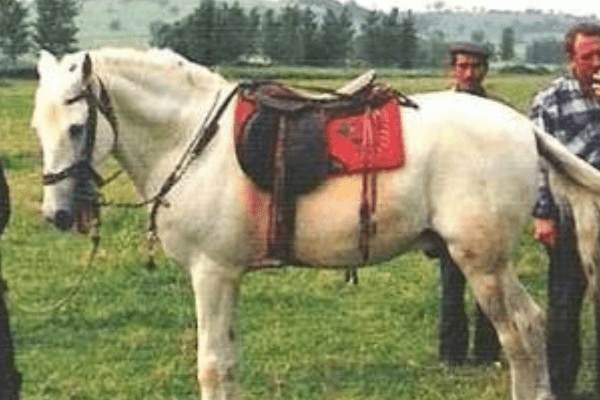The Anadolu Pony, hailing from the diverse terrains of Turkey, is a breed distinguished by its compact size and remarkable versatility. This breed has been meticulously developed to prosper in arduous and inhospitable conditions, showcasing an extraordinary blend of endurance and agility. Renowned for its steadfast nature and impressive speed, the Anadolu Pony stands as a testament to the harmonious balance between resilience and elegance in equine breeds.
History:
The Anadolu Pony, an iconic horse breed hailing from Turkey, is the result of centuries of selective breeding with an unusually diverse genetic heritage. Its lineage can be traced to Akhal-Tekes from Turkey’s Akhal-Teke Stable, robust Turkoman horses from modern Turkmenistan, graceful Persian horses as well as traits from Mongolian, Karabakh Arab Kabarda Deliboz breeds that all contribute unique qualities that have contributed to shaping today’s Anadolu Pony breeders.
Professors M. Nurettin Aral and Salahattin Batu, two acclaimed veterinary specialists, have observed that this breed shows noticeable regional variations, with East Anadolu ponies differing significantly from South East Anadolu ponies – an example of its adaptability to Turkey’s different climates and terrains.
The Anadolu Pony is widely appreciated for its low maintenance needs, making them popular among owners and caretakers. Their resilience and ease of care make this breed ideal for use across a range of environments and roles in Turkey.
Current estimates place Turkey’s Anadolu Pony population at 930,000; its widespread presence demonstrates not only its historical relevance but also its continued significance within modern Turkish culture and agriculture. The breed serves as an emblematic reminder of Turkey’s rich equine heritage spanning centuries of breeding and adaptation to suit local ecosystems.
Characteristics:
The Anadolu Pony, native to Turkey, is renowned for its small yet graceful stature; typically standing between 12.1 to 13.3 hands in height. This breed exhibits elegance and resilience characteristic to their heritage and environment.
Stature and Build: Although small in stature, the Anadolu Pony stands out with its refined and well-proportioned build, lending itself well to agility and endurance. Compactness is another defining feature, contributing to agility.
Facial Features: This breed’s head, small and refined, shows an impressive variety of profiles. Convex and concave facial structures exist within its breed population for added visual interest and genetic diversity within this unique species. This variation speaks volumes for what constitutes genetic diversity within this particular breed.

Mouth and Nostrils: The Anadolu pony’s mouth is small and delicately formed, featuring open and flexible nostrils that help the pony breathe easier in challenging environments. These features do more than simply add aesthetic value; they play an integral part in its respiratory efficiency – an asset particularly critical given this breed’s long history of adaptation to different environments.
Withers and Chest: The breed is distinguished by having low withers that transition into narrow chests. While unique, this does not diminish their physical capabilities; rather it creates a striking profile which is easily recognizable.
Croup: The Anadolu Pony stands out with its elegant appearance due to its sloped croup. Not only is this feature aesthetic; but it also contributes to its agility and speed – essential qualities in its native terrain.
Coat Colors and Mane: The Anadolu Pony’s coat can be found in various shades of brownish tones, black, grey, white, and chestnut, illustrating its adaptability to various environments. Their mane also differs significantly – sometimes thick to thin depending on each pony – adding both aesthetic appeal and insulation depending on its surroundings.

Conservation Status:
Threats: The breed faces challenges due to modernization and a declining need for traditional horse labor. This has led to a decrease in their numbers, raising concerns about their conservation.
Efforts: Conservation programs and breeding initiatives are being implemented to preserve the genetic diversity and heritage of the Anadolu Pony.

